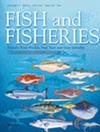深入深海:东北太平洋金枪鱼渔业的起源和演变
IF 6.1
1区 农林科学
Q1 FISHERIES
引用次数: 0
摘要
几千年来,人类对地球的生物多样性产生了深远的影响,最终导致了人类世的环境退化和现代生物多样性危机。虽然人类对地球陆地和近岸海洋生态系统生物多样性的长期影响的规模和程度已经得到了较好的研究,但关于人类对远洋生态系统和生物的影响的古代和演变还存在重大问题。通过对东北太平洋金枪鱼(Thunnus spp.)渔业的起源和扩展的考古和历史观点,我们探索了人类与近海海洋生物和生态系统相互作用的全新世历史。从加拿大太平洋海岸到下加利福尼亚的土著居民捕捞金枪鱼已有5000年的历史,但金枪鱼通常不是土著渔业最丰富的目标物种之一,他们主要集中在近岸海藻林、岩礁和河口栖息地。与资本主义商业渔业相比,本土金枪鱼渔业的规模相对较小,资本主义商业渔业始于20世纪初,在第一次世界大战和第二次世界大战期间迅速加速,并在20世纪80年代中期或更早的时候下降。尽管土著居民在东北太平洋捕捞金枪鱼已有上千年的历史,但人类对东北太平洋近海生态系统的大量利用和影响主要与20世纪中期的大加速及其相关的全球生态影响有关。这些数据说明了人类几千年来作为海洋栖息地驱动力的重要作用,但也表明,对近岸海岸生态系统的强烈人为影响比近海生态系统早几千年出现。本文章由计算机程序翻译,如有差异,请以英文原文为准。
Into the Deep: Origins and Evolution of Northeastern Pacific Ocean Tuna (Thunnus spp.) Fisheries
People have had a profound influence on Earth's biodiversity for millennia, culminating in Anthropocene environmental degradation and the modern biodiversity crisis. While the scale and extent of people's long‐term influence on Earth's biodiversity in terrestrial and nearshore marine ecosystems are relatively well studied, there are significant questions about the antiquity and evolution of people's influence on pelagic ecosystems and organisms. We explore the Holocene history of human interactions with offshore marine organisms and ecosystems by integrating archaeological and historical perspectives on the origins and expansion of northeastern Pacific Ocean tuna (Thunnus spp.) fisheries. Indigenous people from the Pacific Coast of Canada to Baja California fished for tuna for > 5000 years, but tuna were generally not one of the most abundant species targeted by Indigenous fisheries, which largely focused on nearshore kelp forest, rocky reef and estuary habitats. The scale of Indigenous tuna fisheries is relatively small when compared to capitalist commercial fisheries, which commenced by the onset of the 20th century, rapidly accelerated during World War I and II, and declined by the mid‐1980s or earlier. Although Indigenous people fished for tuna in the northeastern Pacific for millennia, significant human use of and influence on offshore ecosystems in the northeastern Pacific is primarily associated with the mid‐20th century Great Acceleration and associated global ecological impacts. These data illustrate the important role of people as a driving force in marine habitats for millennia but demonstrate that strong anthropogenic influence on nearshore coastal ecosystems appeared several millennia before those of offshore ecosystems.
求助全文
通过发布文献求助,成功后即可免费获取论文全文。
去求助
来源期刊

Fish and Fisheries
农林科学-渔业
CiteScore
12.80
自引率
6.00%
发文量
83
期刊介绍:
Fish and Fisheries adopts a broad, interdisciplinary approach to the subject of fish biology and fisheries. It draws contributions in the form of major synoptic papers and syntheses or meta-analyses that lay out new approaches, re-examine existing findings, methods or theory, and discuss papers and commentaries from diverse areas. Focal areas include fish palaeontology, molecular biology and ecology, genetics, biochemistry, physiology, ecology, behaviour, evolutionary studies, conservation, assessment, population dynamics, mathematical modelling, ecosystem analysis and the social, economic and policy aspects of fisheries where they are grounded in a scientific approach. A paper in Fish and Fisheries must draw upon all key elements of the existing literature on a topic, normally have a broad geographic and/or taxonomic scope, and provide general points which make it compelling to a wide range of readers whatever their geographical location. So, in short, we aim to publish articles that make syntheses of old or synoptic, long-term or spatially widespread data, introduce or consolidate fresh concepts or theory, or, in the Ghoti section, briefly justify preliminary, new synoptic ideas. Please note that authors of submissions not meeting this mandate will be directed to the appropriate primary literature.
 求助内容:
求助内容: 应助结果提醒方式:
应助结果提醒方式:


